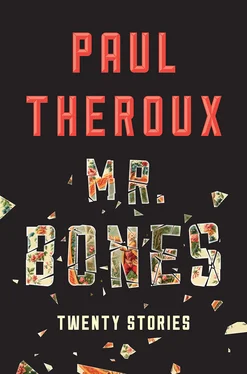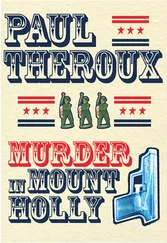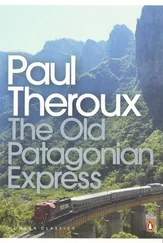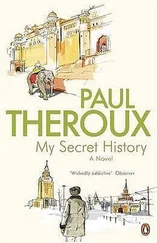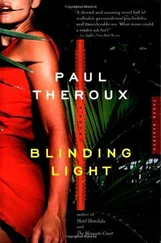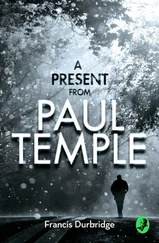“The Ming vase,” he told friends. “It got T-boned. By me.”
He smiled at their shocked silence. People at the periphery could be possessive of someone else’s treasures, as if these things were aspects of the friendship. Did they think he was so rich that he would hand them over?
These memories buoyed him through the rest of the divorce, the last of the paperwork, the depositions, all the signatures, the summing up, the attorneys’ fees. Whenever he became glum — wondering What next? — he summoned up the moment in his office when the vase slipped from his fingers, the finality of its breaking, the shoe crunch, and the look of loss on her face.
Minor Watt had a collector’s caressing habit when alone, of padding around his apartment in slippers, picking up the smaller objects in his collection, holding them to the light, and turning them slowly, as you were forbidden to do in museums. He savored the details that made them unique, the subtle flourishes, not only the texture carved into an elephant tusk but the buttery hue of old ivory, the tiny human stick figure like a petroglyph incised into the shaft of a Tongan war club, the scarification represented on the cheeks of a Chokwe pwo mask, the lizard gouged into the dome of a Kenyah skull, the diamond in the forehead of a small seated silver-cast Buddha. Leonard Baskin sometimes wrote a note in pen strokes on a watercolor in his elegant hand. Minor Watt owned three such Baskins — three different notes. No two Francis Bacons were alike; many seemed provisional and splashed. Minor Watt’s Study for Head of George Dyer was overpainted in one corner, streaked in another, rubbed with the dust from Bacon’s studio. The painting was not large, but all Bacons were valuable, almost absurdly so. Some collectors kept them in vaults, with albums of Krugerrands and taped blocks of hundred-dollar bills.
He’d been eating. He rose from the table and lifted the Study for Head of George Dyer from the wall and propped it against the silver Victorian wine cooler near his plate of meat. Imitating the George Dyer pout, he braced and gripped his steak knife and raked the canvas, two swipes, then held it on his lap. He marveled at the sight of his own knees through the slashes he’d made — the real world framed by the rags of the painting. He poked at the long slashes. Hearing him grunt, his servant, Manolo, opened the dining room door. “You okay, boss?”
But Minor Watt’s feeling was muted. He’d wished someone had seen him, as Sonia had. Not Manolo, who had no idea, but a true witness — even better, a connoisseur.
He called a friend, Doug Redman, who owned several Bacons, but prints, the limited-edition signed lithographs. Redman had often remarked on this painting.
Redman came over that same night, because Minor Watt had said, “It’s about my Bacon. I want you to see it.”
Minor Watt was sitting before his fireplace when Redman entered the room. At first he did not believe that the slashed painting in his lap was the Head of George Dyer. The profile was familiar, the frame unmistakable.
Minor Watt said, “It’s the Bacon. You know it’s the Bacon.”
“But what fuckwit damaged it?”
“I did!” Minor Watt cried out, giddy from hearing his own shrieky voice. The man leaned closer and looked pained, seeing that it was the Bacon. Minor Watt threw it into the fire and at once the canvas caught and flames rushed over it, making a black hole in the slower-burning frame.
Redman groaned and made as if to snatch at it, but the canvas was just smut and soot.
“What’s wrong with you?” he said in a tentative voice, too fearful to be angry, as though dealing with a crazy man who might run at him.
He’d expected this art collector’s shock, but Redman’s terror made Minor Watt even happier.
“Gone!” Minor Watt said, and Redman stepped back. “Totaled!”
“How can you do a thing like that, especially in this economy?”
“Your objection is that I’m wasting money, not destroying a work of art. You’re the fuckwit. You don’t deserve to live.”
Afterward Redman talked, word got around, but no one asked straight-out if Minor Watt had destroyed the painting. To several friends Minor Watt said, “By the way, I fried the Bacon.”
A witness gave the destruction a greater meaning and made it all the more satisfying. But the problem was to find someone who knew enough about such an eclectic collection to care. Most of the idiots had no idea. What good was it to smash something in private? Someone else had to know, someone had to care. Who better than the painter himself? The Noland target painting was an early one from 1965. Minor Watt invited Kenneth Noland to his house and encouraged the softly smiling white-haired man to admire his own painting. “One of my favorites,” the old man said. And then, with Noland watching, Minor Watt stepped close and shot an arrow into the bull’s-eye. Before the startled Noland could protest, Minor Watt threw down his bow and swiped at the painting with a dagger.
“Whoa,” Noland said, staggering a little and raising his hands to protect his face, as though he expected to be assaulted. And then, cursing, he hurried from the room.
“It was like wasting one of his children,” Minor Watt told Noland’s dealer, because the dealer had once asked to buy back the painting.
The dealer said, “I don’t think anyone has ever done what you’ve done.”
“People used to tell me that all the time,” Minor Watt said, “but for once I think you’re right.”
He owned a set of crockery, a dinner service for eight, that had been used at Vailima by Robert Louis Stevenson. He invited seven friends, Manolo served a gourmet meal, Minor Watt told the story of the plates, how they had been brought by old Mrs. Stevenson, visiting from Edinburgh (“They’d been in the family for years”), explained the monogram, called attention to the gilded rims. Over dinner the talk was of selling valuables and budgeting. “We’re selling our plane.” “We’ve auctioned our Stella.” “We’ve put Palm Beach on the market.”
When the meal was over, he asked the diners to carry the plates out to the upper deck of his penthouse. He stacked them and, fascinated by the oddity of the pile of plates resting on a rail, a pillar of bone china, the diners watched him push them over the edge onto the tiled terrace below.
As a woman screamed, Minor Watt said, “Now we don’t have to wash them.”
That look of joy meant he had to be insane, probably dangerous — they were afraid. They would never forget this, he knew. And he saw how they sidled away, made excuses to leave.
About fifteen minutes later, one of them, Irby Wilders, came back.
“Minor — you okay?”
“Never better. You?”
Irby’s mouth was shut tight, his eyes narrowed, like a man on the deck of a ship in a gale. He said, “I’m wondering where the bottom is.”
“It’s down there,” Minor Watt said, pointing to the smashed plates.
He knew this disillusioned investor thought he was crazed by the recession. But “never better” was exactly how he felt. He was strengthened by the dropping of the irreplaceable plates.
Minor Watt did not say the word, but he knew the feeling that preceded this act of violence. It was disgust. Disgust had made him drop the Ming vase. What was the origin of his disgust? He did not know. It wasn’t money, but it was related to wealth, a kind of fatness. Many people he knew were embarrassing themselves in their economies. Now they believed him when he said, “None of that for me.” He was well aware that by ridding himself of the rare objects all the sourness in him was gone, and he had an appetite again.
He saw the point of murder now, and not simple homicide, but cannibalism. He’d found the cabinet of skulls an aesthetic satisfaction, like a rare ossuary. He’d never understood the pleasure of eating the bodies of these men, of emptying these skulls of the brain and spooning it into a bowl and gorging on the gray jelly sponge. Now he appreciated the magnificence of eating flesh, the great appetite, the ritual devouring. The destruction of the vase and the plates and paintings — pieces as unique as any man — was not vandalism. It was enrichment, a source of power. He was eating art.
Читать дальше
